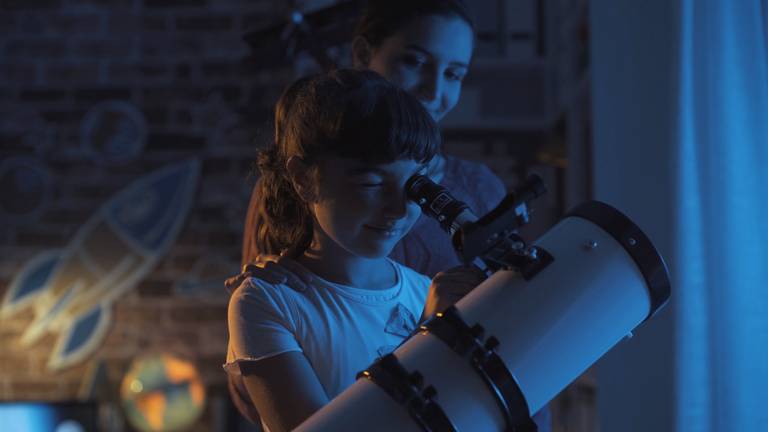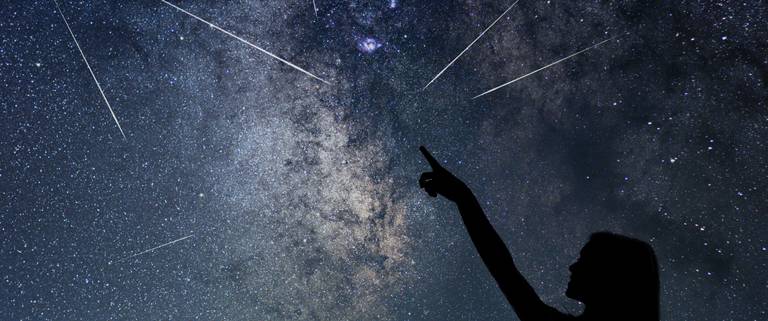A Quick Tour of Five Northern Autumn Constellations

Astronomy beginners and amateur astronomers will have plenty of things to see in the autumn sky. The changing season brings new constellations into view, and with them, new opportunities to view and observe old favorites, but perhaps also some new ones, or perhaps objects that you may not have observed for a long time. If you are familiar with the five constellations listed here you will no doubt be glad they are coming into view again, but if you are new to star gazing, this quick overview should familiarize you with at least the basic features of these constellations, so let us start with the following five constellations.
Andromeda constellation
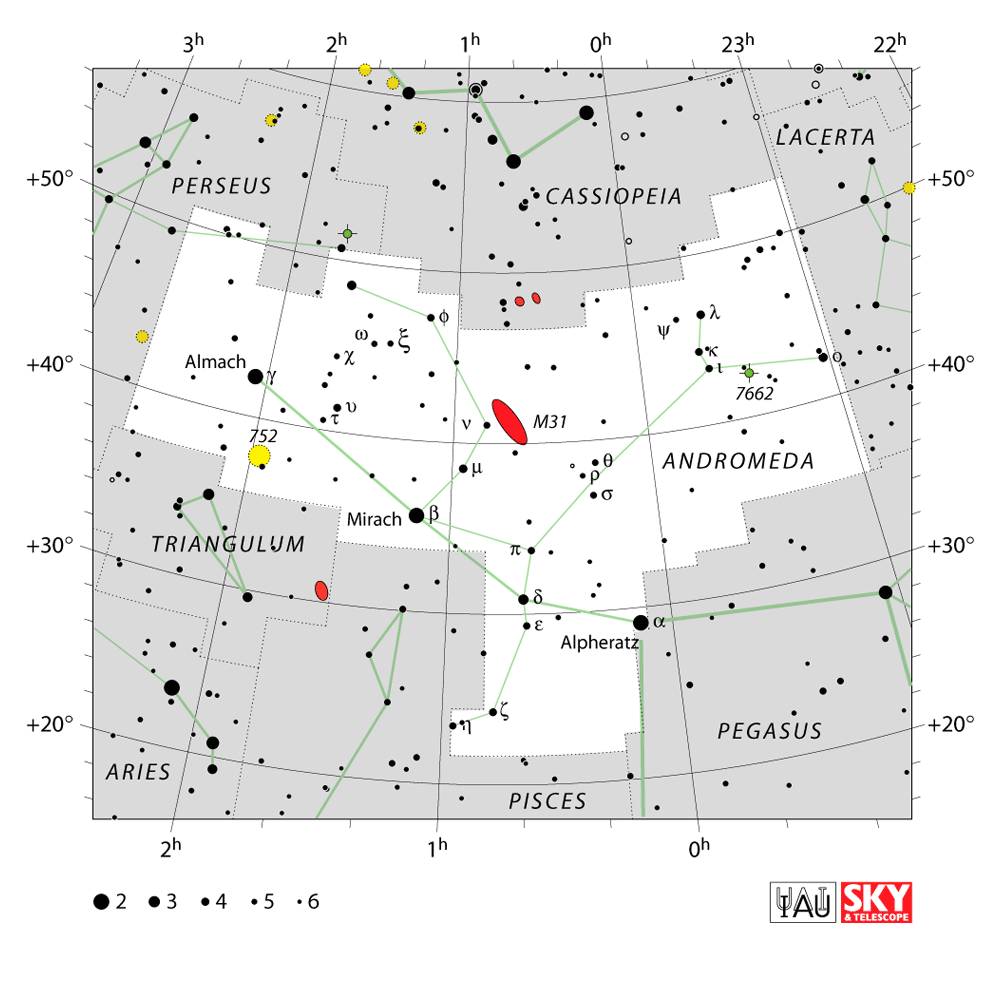
Source
Andromeda quick facts:
- Location: Between latitudes +90° and -40°
- Size: 722 square degrees
- Neighboring constellations: Lacerta, Pegasus, Perseus, Triangulum, Cassiopeia, Pisces
- Best seen: 9 PM Local Time during November
- Stars with planets: 16 stars with 19 planets between them, with the star Upsilon Andromedae, traditionally known as Titawin, hosting 4 planets.
- Brightest star: The brightest star in Andromeda is Alpha Andromedae, traditionally known as Alpheratz. The star is in fact a binary star, in which the primary component is a B8-class sub-giant that exhibits very high abundances of mercury, manganese, and several other metallic compounds. The primary star has an apparent visual magnitude of +2.06, is about 3.6 times as massive as the Sun and with an effective surface temperature of 13,800 K, it is at least 200 times more luminous than the Sun. The secondary component is also both significantly heavier than the Sun, and at least ten times as luminous. The system has an orbital period of 96.7 days.
Notable deep sky objects:
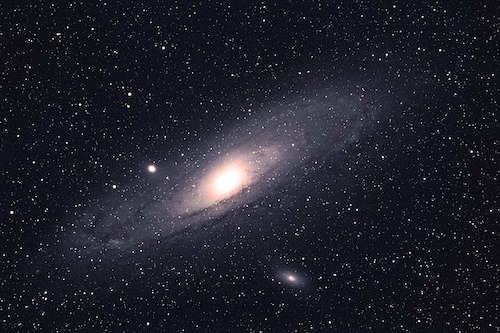
Other notable objects include NGC 206, an enormous star cloud in M31. This cloud is the most luminous such object from our vantage point, and with a diameter of about 400 light years, it is also among the largest star forming regions in the entire Local Group of Galaxies.
Spectacular is equally NGC 224-G1 (Mayall II), a huge, magnitude 13.7 globular cluster located about 130,000 light years away from M31’s core. With twice the mass of Omega Centauri, the largest and most massive of the Milky Way’s clusters, Mayall II is the largest, brightest and among the most massive, if not the most massive globular cluster in the entire Local Group of Galaxies. In fact, the cluster is so massive that many astronomers do not regard it as a true globular cluster, but rather as the remains of a dwarf galaxy that was ingested by M31 in the distant past.
Other objects of interest that can be viewed with modest amateur equipment include the open star cluster NGC 7686, the planetary nebula NGC 7662 (The Blue Snowball Nebula), and NGC 891, an edge-on spiral galaxy much like the Milky Way.
Aquarius constellation
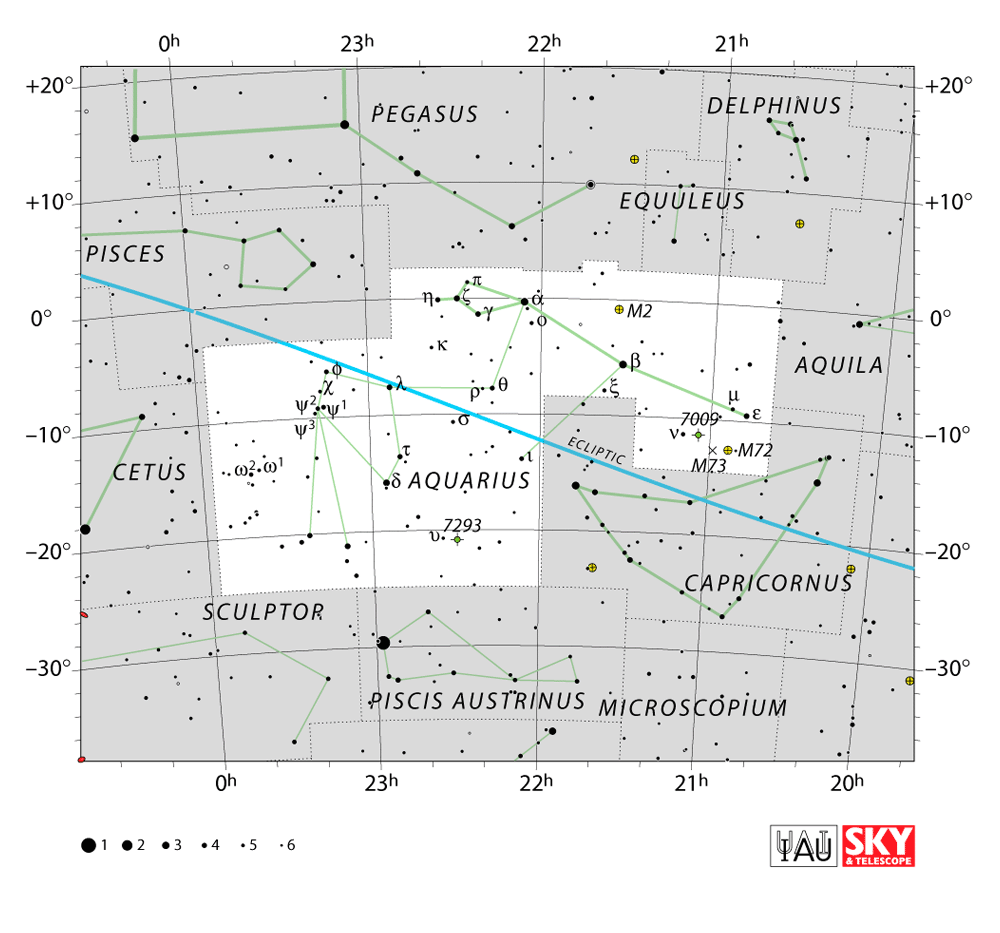
Source
Aquarius quick facts:
- Location: Between latitudes +65° and -90°
- Size: 980 square degrees
- Neighboring constellations: Aquila, Cetus, Capricornus, Delphinus, Pisces, Equuleus, Pisces Austrinus, and Sculptor
- Stars with planets: 14 stars with 19 planets between them, with the star WASP-47 hosting 4 planets
- Best seen: 9 PM Local Time during October
- Brightest star: Beta Aquarii, traditionally known as Sadalsuud, a rare yellow supergiant star with an apparent visual magnitude of 2.87. The star is in fact a multiple star system, with the primary component (Sadalsuud) being 6 times more massive than the Sun, and at least 2,200 times as luminous.
Notable deep sky objects:
Aquarius contains 2 stars more luminous than magnitude 3, and total of 7 stars that are closer than 10 parsecs from us, with the closest being EZ Aquarii, a triple star system that is located only about 11.27 light years away, and that consists of 3 M-class red dwarf stars.
Other notable objects include three Messier objects:
—M2, a 13-billion-year-old globular cluster located about 5 degrees to the northward of Sadalsuud. The cluster contains roughly 150,000 stars, and spans across 175 light years, making it one of the Milky Way’s largest globular clusters. M2 has an apparent visual magnitude of 13.1
— M72, also a globular cluster located about 53,000 light years away, placing it on the other side of the galactic center from us. Although the cluster spans across 106 light years and has an apparent magnitude of 9.3, at least a 20-inch telescope is required to resolve any detail in the cluster.
-M73, a cluster, or more precisely, an asterism of four stars that until 2002, was regarded as a very sparse open cluster. It turned out, however, that the stars in the cluster are not physically related, and that they are in fact, moving away from each other.
Aquarius also contains two planetary nebulae, NGC 7009, Caldwell 55 (Saturn Nebula), and NGC 7293, Caldwell 63 (Helix Nebula, Eye of God), both of which are relatively easy targets for small telescopes. Note also that three meteor showers, the Eta Aquariids, Delta Aquariids, and Iota Aquariids have their radiants in Aquarius.
Capricornus constellation
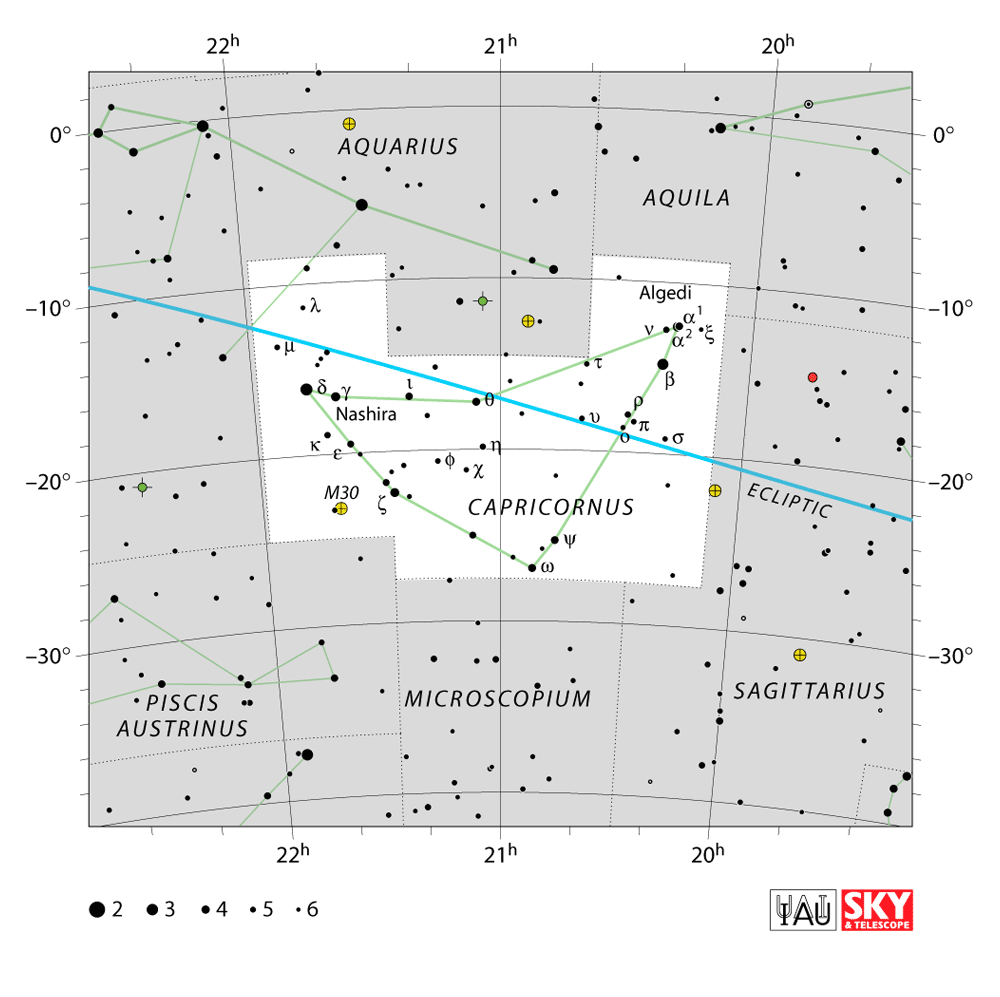
Source
Capricornus quick facts:
- Location: Between latitudes +60° and -90°
- Size: 414 square degrees
- Neighboring constellations: Aquila, Aquarius, Microscopium, Pisces Austrinus, and Sagittarius
- Stars with planets: 5 stars with 9 planets between them
- Best seen: 9 PM Local Time during September
- Brightest star: Delta Capricorni, traditionally known as Deneb Algedi (or sometimes as Sheddi), a magnitude 2.85 spectroscopic eclipsing binary star. The optically un-resolvable companion orbits the primary star around a common center of mass once every 1,023 days, causing a cyclical dip in the primary star’s brightness of 0.2 magnitudes. Note that the primary component is also a Delta Scuti variable star that fluctuates in brightness as the result of both radial and non-radial surface pulsations.
Note also that since the star is close to the ecliptic it can be occulted by the Moon, and sometimes, although very rarely, by some of the planets as well.
Notable deep sky objects:
The only object with any interest for amateur observers using modest equipment is M30, a 90-light-year diameter globular cluster that is approaching us at the break-neck speed of 181.9 km/sec. Like many other globular clusters, M30 has undergone a process of core collapse and just more than 50% of the cluster’s mass is now concentrated in a tightly packed ball (in the clusters’ core) that is only 17.4 light years across.
Five meteor showers, the Alpha Capricornids, Chi Capricornids, Sigma Capricornids, Tau Capricornids, and Capricorniden-Sagittarids have their radiants in the constellation.
Pegasus constellation
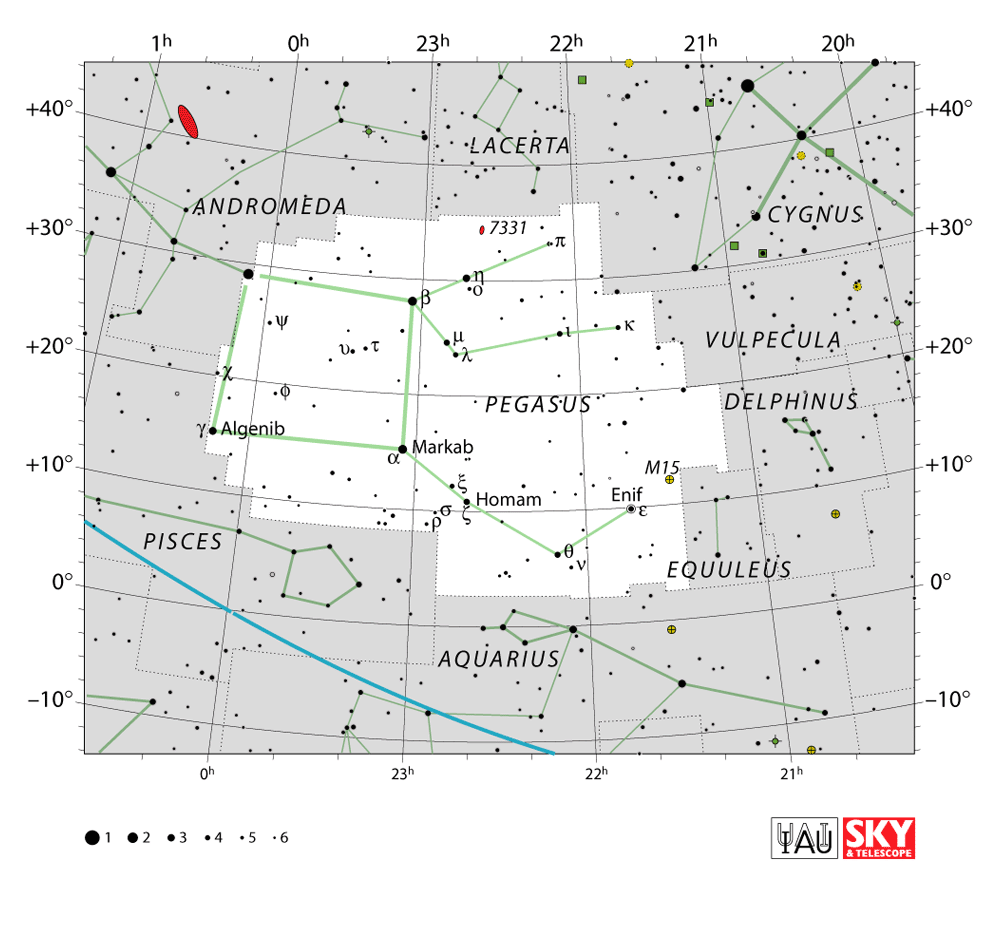
Source
Pegasus quick facts:
- Location: Between latitudes +90° and -60°
- Size: 1121 square degrees
- Neighboring constellations: Cygnus, Aquarius, Andromeda, Delphinus, Equuleus, Pisces, and Vulpecula
- Stars with planets: 17 stars with 20 planets between them
- Best seen: 9 PM Local Time during October
- Brightest star: Epsilon Pegasi, traditionally known as Enif, a magnitude 2,33 K2 Ib-class orange supergiant star that is further classified as a slow irregular variable. The star is 12 times more massive than the Sun, at least 5,000 times as bright, and about 185 times as big. Enif is also notable on account of its high barium and strontium abundances, and for its high true peculiar velocity of 21.6 km/sec.
Notable deep sky objects:
Apart from the famous Great Square of Pegasus asterism that is made up of the bright stars Markab (Alpha Pegasi), Algenib (Gamma Pegasi), and Scheat (Beta Pegasi), the only other object in Pegasus that may be of interest to amateur observers is Messier 15 (NGC 7078).
M15 is a 12-billion-year-old, magnitude 6.2 globular cluster, which at a distance of about 33,600 light years from us, is at least 360,000 times brighter than the Sun. The cluster is also notable for several other things, such as that it contains among its 100,000 stars, M15 C, a double neutron star, and Pease 1, the first planetary nebula to be discovered within a globular cluster. Other notable members of the cluster are Messier 15 X-1 and Messier 15 X-2, both of which are luminous X-ray sources.
Pisces constellation
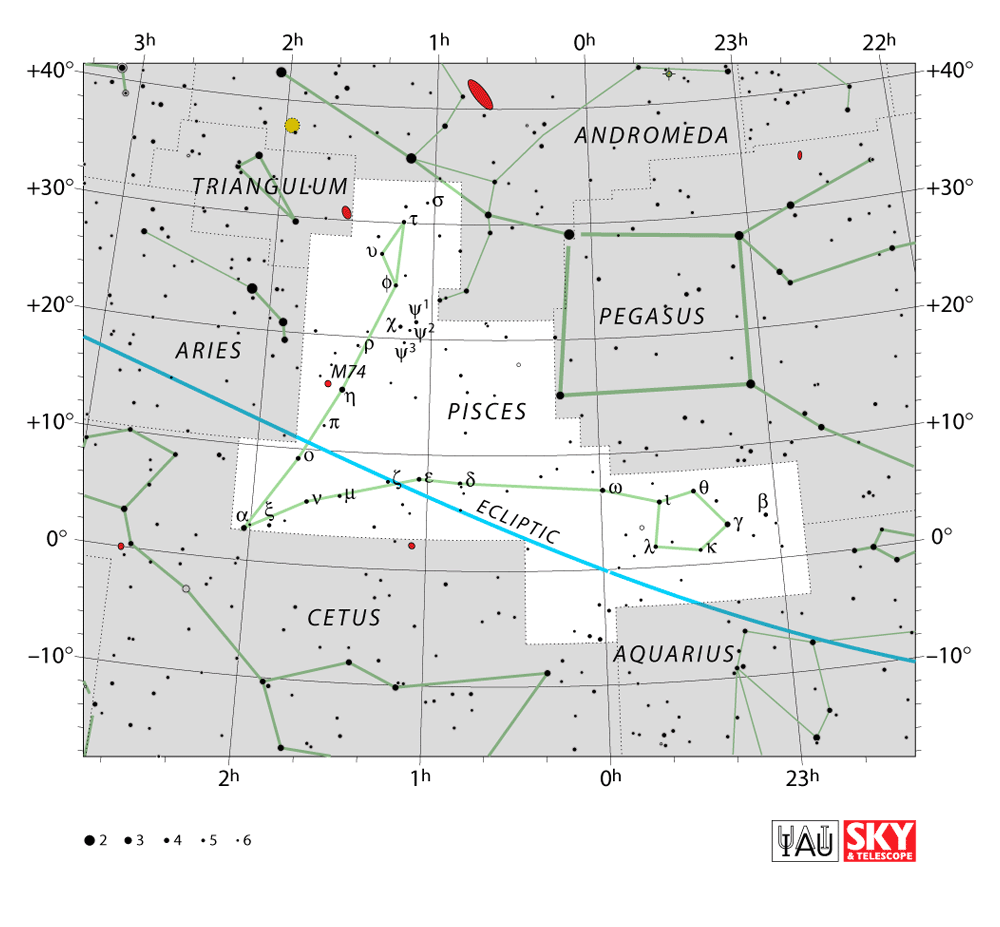
Source
Pisces quick facts:
- Location: Between latitudes +90° and -65°
- Size: 889 square degrees
- Neighboring constellations: Aquarius, Aries, Andromeda, Triangulum, Pegasus, and Cetus
- Stars with planets: 39 stars with 41 planets between them
- Best seen: 9 PM Local Time during November
- Brightest star: Eta Piscium, traditionally known as Kullat Nunu, a magnitude 3.62 G7-class yellow giant that is about 4 times as massive as the Sun, and at least 316 times as luminous: it is also about 26 times bigger than the Sun
Notable deep sky objects:
Pisces contains only 1 Messier object, M74, a classic grand design spiral galaxy that is estimated to contain about 100 billion stars. Note though that M74 has a very low surface brightness, which makes it the most difficult Messier object to observe with amateur equipment. Nonetheless, Pisces contains several prominent asterisms, the details of which are given below—
—Piscis Boreus—The North Fish formed by the stars σ, 68, 65, 67, ψ1, ψ2, ψ3, χ, φ, υ, 91, τ, 82 and 78 Piscium.
—Piscis Austrinus—The South Fish formed by the stars ω, ι, θ, 7, β, 5, κ, 9, λ and TX (19) Piscium.
—Linum Boreum—The North Cord formed by the stars χ, ρ, 94, VX (97), η, π, ο and α Piscium.
—Linum Austrinum—The South Cord formed by the stars α, ξ, ν, μ, ζ, ε, δ, 41, 35 and ω Piscium.
—The Circlet—formed by the stars Gamma, Kappa, Lambda, TX, Iota, and Theta Piscium.
One meteor shower, the Piscids has its radiant in Pisces, which is currently also the point of the Vernal Equinox.







